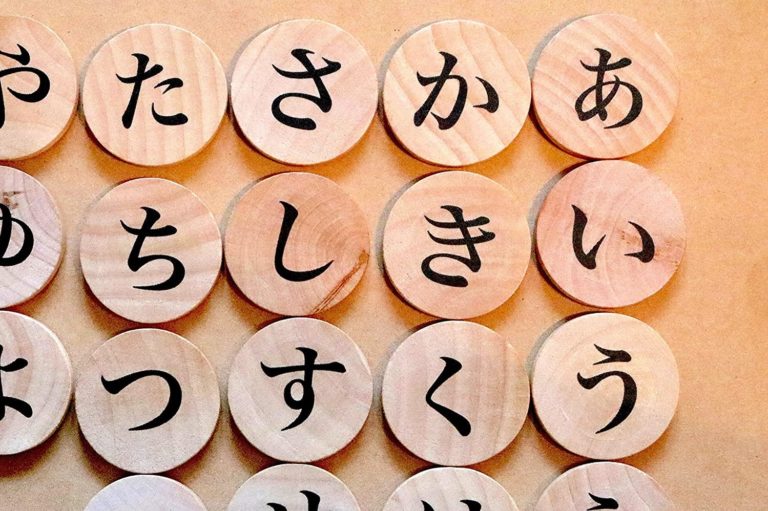Japanese grammar is very simple and straightforward.
Japanese grammar is very simple and straightforward, but it is so different from English grammar that most English speakers are quite confused.
For example, in Japanese the verb is always last. The best thing you can do when learning Japanese is to learn it from the bottom up, rather than comparing it to English grammar.

Click here to learn Japanese language with the best one-on-one Japanese tutoring lessons in person or online.
In Japanese, particles are used to mark different parts of a sentence.
Particles “wa” (ha) and “ga” (ga): The particle “wa” indicates the topic of the sentence, and the particle “ga” indicates the subject of the sentence. In the example, “I know where you live” (I know where you live), “I” is the topic, and “you” is the subject.
Not all Japanese sentences have both a topic and a subject, and topics are often implied in Japanese (for example, “I” (Watashi) is implied because I am speaking. Therefore it is excluded from this sentence I am someone who knows where you live).
Particle “o” (o): The particle “o” (or “o”) indicates the direct object of a Japanese sentence. In the example, “I take her home” (I take her home) (I take her home), “she” is the direct object.
Particle “ni”: The particle “ni” can be used to mark the direction, time, or indirect object of a Japanese sentence.
An example of a directional marker can be found in the previous example “I take her home” (I take her home “(I take her home). In this case,” “ni” works like “to”-“I take her home”. The particle “e” can also be used this way, but usually not in a specific place. , Means a more general direction.
The particle “ni” is also used to indicate the time of a Japanese sentence. For example, “I’m leaving at 3 o’clock” (I’m Hanarel to Sanji).
The final use of the particle “ni” in Japanese grammar is an indirect object marker. In the example, “I was taken to him” (I made him, that is, Oklareta), “he” is an indirect object.
日本語の文法は非常に単純でわかりやすいですが、英語の文法とは大きく異なるため、ほとんどの英語を話す人はかなり混乱します。たとえば、日本語では動詞は常に最後になります。日本語を学ぶときにできる最善のことは、英語の文法と比較するのではなく、ボトムアップで学ぶことです。
日本語では、助詞と呼ばれるものを使用して、文のさまざまな部分をマークします。
助詞「wa」(は)と「ga」(が):助詞「wa」は文のトピックを示し、助詞「ga」は文の主語を示します。例では、「私はあなたがどこに住んでいるのか知っています」(私はあなたがどこに住んでいるのかを知っています)、「私」がトピックになり、「あなた」が主題になります。
すべての日本語の文にトピックと主語の両方があるわけではなく、多くの場合、トピックは日本語で暗示されます(たとえば、「私」(渡は)は、私が話しているので暗示されるため、この文から除外されます私はあなたがどこに住んでいるかを知っている人です)。
助詞「を」(を):助詞「を」(または「を」)は、日本語の文の直接目的語を示します。例では、「私は彼女を家に持ち帰ります」(私は彼女を家に持ち帰ります)(私は彼女を家に持ち帰ります)、「彼女」は直接の目的語になります。
不変化詞「に」:不変化詞「に」は、日本語の文の方向、時間、または間接目的語をマークするために使用できます。
方向マーカーの例は、前の例「私は彼女を家に持ち帰ります」(私は彼女を家に持ち帰る」(私は彼女を家に連れて行く)に見ることができます。この場合、「ni」は「to」のように機能します-「私は彼女を「家に連れて行く」」。助詞「e」(へ)もこのように使用できますが、通常、特定の場所ではなく、より一般的な方向を意味します。
不変化詞「ni」は、日本語の文の時間を示すためにも使用されます。たとえば、「3時に出発します」(ワタシはサンジにハナレル)。
日本語の文法における助詞「に」の最後の用途は、間接目的語マーカーです。例では、「私は彼に連れて行かれた」(ワタシはカレに、つまりオクラレタを作った)、「彼」は間接目的語です。
Related article:










